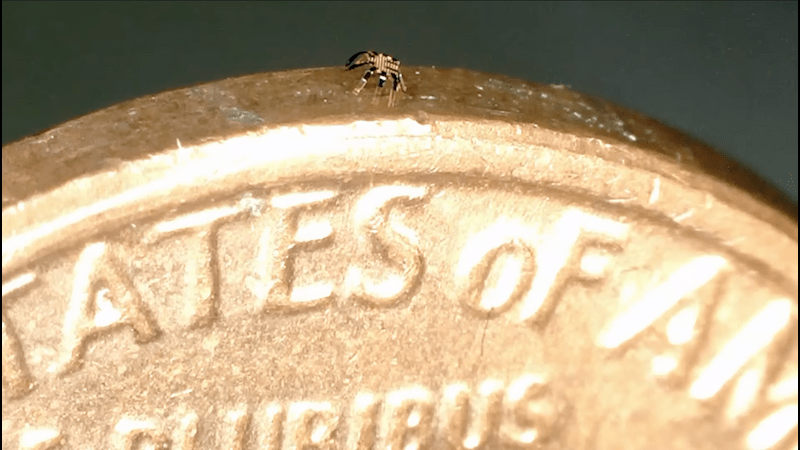Smaller than a flea: Northwestern engineers create the world’s smallest remote-controlled walking robots

- Oops!Something went wrong.Please try again later.
- Oops!Something went wrong.Please try again later.
Engineers at Northwestern University in Evanston, Illinois, have developed the tiniest remote-controlled, walking robot in the world.
The robots, which are about half a millimeter wide each, are made out of a malleable shape-memory alloy that can be deformed and returned to its original shape using heat, according to the report published Wednesday in Science Robotics.
The research that made the robots possible was led by Yonggang Huang, the Jan and Marcia Achenbach Professor of Mechanical Engineering, and John A. Rogers, the Louis Simpson and Kimberly Querrey Professor of Materials Science and Engineering, at Northwestern University.
Creating the metal creatures reportedly took the student members of the research team a year and a half. According to Rogers, the students designed the robots to look like crabs, inchworms, crickets and other animals. He said the crab robot in particular was developed out of some of the students’ fascination with the sideways motion of crabs.
More from NextShark: Jeremy Lin ‘Deeply Honored’ to Be Selected as Harvard’s 2021 Class Day Speaker
Starting out as flat objects, the robots are able to stand when heat is applied to certain areas that would bend their legs and arms.
Applying heat to specific joints partially returns them to the original flattened state. Done repeatedly in a specific sequence, the heat application makes the crabs twist, turn or jump, Rogers said. The students were able to control the robots precisely using lasers.
"A laser is a convenient way to do it because we can focus the light to a very tiny spot, and we can scan that spot around to illuminate different parts of the robot's body in a time sequence," he told CNN.
More from NextShark: Tommy Le’s Family Wins $5 Million Settlement for 2017 Police Killing
Primarily created for academic purposes, the robots are currently in the early stages of development, but the technology behind them offers significant potential.
Rogers noted that tiny crab robots can someday be used to perform minimally invasive surgeries or assist in repairing or assembling small-scale machines.
For now, the team intends to expand on the robots’ capabilities.
More from NextShark: Huawei Patent Reveals Tech That Identifies Uyghur People
"As an aspirational goal, I asked the students to see if they could come up with a way to make these robots take flight — maybe impossible, but fun to think about," Rogers was quoted as saying.
Featured Image via NorthwesternU
More from NextShark: Asian Vendor Allegedly Asked to Leave Market in U.K. Over Fear of Coronavirus

